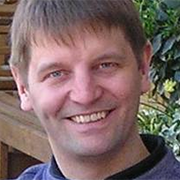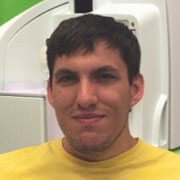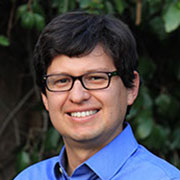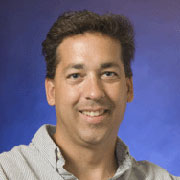Invited Speakers
Claus Svendsen, NERC Centre for Ecology & Hydrology
 Theme: Nanoinformatics for the ICEENN community
Theme: Nanoinformatics for the ICEENN community
Claus Svendsen works on fundamental and applied environmental research at the NERC Centre for Ecology and Hydrology (UK) in Wallingford, leading their Ecotoxicology and Chemical Risk Group. He has authored or co-authored of over 100 papers and book chapters, and coordinated or been a WP leader or partner in many EU-funded projects on biomarkers, chemical mixtures and nano materials from FP4 – H2020, with other major funding from NERC (UK), EFSA and Defra(UK).
His current research interests include nanoecotoxicology, comparative environmental genomics, bioavailability, and mixture toxicity. The overall focus being on how effects at the mechanistic levels translate into effects for populations and how organisms survive as populations in polluted habitats. For nanomaterials the current emphasis of our work is to address fate (transport, distribution and transformation), uptake and effects of exposure relevant (i.e. releases and environmentally processed/aged) nano materials and compare such results to those gained from “as produced” original nano materials.
Keana Scott, National Institute of Standards and Technology (NIST)
 Theme: Nanomaterials in consumer products, exposure from releases, and government perspective
Theme: Nanomaterials in consumer products, exposure from releases, and government perspective
Keana Scott is a Physical Scientist in the Materials Measurement Science Division at the National Institute of Standards and Technology (NIST). Keana graduated from the California Institute of Technology in 1991 with a B.S. in Engineering and Applied Sciences. She completed her Ph.D. in Mechanical Engineering from the University of Pittsburgh in 1997 and earned an M.S. in Biotechnology from The Johns Hopkins University in 2006. After developing automation engineering solutions for Celera Genomics during their collaboration with NIH on the Human Genome Project, Keana advanced within Celera to lead a group of scientists involved in computational chemistry and proteomics, while also contributing to informatics and genomics projects within both Celera and Applied Biosystems. Keana joined NIST in April 2006 as a member of the Materials Measurement Science Division to work on multi-modal bioimaging technique development and the microanalysis of biological materials using electron and ion beams. Keana's current research focuses on the characterization of nanomaterials and nanomaterial release from consumer products and the development of compressive sensing approaches for electron and ion microscopy.
Manuel Montano, University of Vienna
 Theme: Characterization
Theme: Characterization
Dr. Manuel D. Montaño is a postdoctoral scholar at the Department of Environmental Geosciences, University of Vienna. He worked at Duke University as a postdoctoral associate investigating how nanomaterials influence the fate and behavior of molecular contaminants present in nano-enabled products. He completed his Ph.D. in 2014 at the Colorado School of Mines, where his doctoral work focused on the development of analytical techniques for the detection and characterization of engineered nanomaterials in the environment; specifically working to develop single particle ICP-MS (spICP-MS) as a viable option for the routine analysis of nanoparticles in complex biological and environmental matrices.
His research interests include: detection and characterization of engineered nanoparticles in complex biological and environmental systems, single particle ICP-MS and ICP-TOF-MS for the differentiation of engineered nanoparticles and naturally occurring nanominerals, studying the impact of nanomaterials on the fate and transport of molecular co-contaminants in nano-enabled consumer products.
Juan Pablo Giraldo, University of california at riverside
 Theme: Applications and implications of nanomaterials for agriculture
Theme: Applications and implications of nanomaterials for agriculture
Title: Targeted Foliar Delivery of Nanoparticles to Organelles for Engineering Crop Stress Tolerance
Juan Pablo Giraldo is an assistant professor of plant physiology at the University of California at Riverside. The Giraldo Lab works at the interface between plant physiology and nanotechnology. Nanoparticles have unique optical, electronic, and chemical properties. The interactions of nanoparticles with plants and their impact on plant function is not well understood. We aim to develop research tools with nanoparticles to study and engineer plant physiological mechanisms at levels of organization ranging from organelles to tissues and whole plants. Using a plant nanobionic approach we also seek to enable plants with novel or augmented functions. Research projects in the Giraldo lab are focusing on: understanding the impact of nanoparticles on plant photosynthesis and abiotic stress; developing nanosensors for monitoring plant signaling molecules in vivo; targeted delivery and controlled release of biomolecules in plants by nanoparticles.
Greg Lowry, Carnegie Mellon University
 Theme: Mesocosms and what we’ve learned about investigating complex systems
Theme: Mesocosms and what we’ve learned about investigating complex systems
Dr. Greg Lowry is the Walter J. Blenko, Sr. Professor of Civil and Environmental Engineering at Carnegie Mellon University. He teaches courses in Environmental Fate and Transport of Organic Compounds in Aquatic Systems, Environmental Nanotechnology, Fundamentals of Water Quality Engineering, and Environmental Sampling and Sample Characterization.
His research interests broadly include Environmental Nanotechnology, Energy and Environment, and Environmental Remediation. Specific current research areas include characterizing nanoparticle transformations and reactivity is soils, water and plants, targeted and efficient delivery of nano-enabled fertilizers and nutrients, and contaminant fate in the subsurface.
He is an experimentalist working on a variety of fundamental and application-oriented research projects including developing and testing nano-enabled environmental technologies for sustainable agriculture and remediation, and characterizing the environmental fate processes of engineered and natural nanomaterials and organics in soils and porous media.
Alison Elder, University of Rochester Medical Center
 Theme: Toxicology of Engineered Nanomaterials
Theme: Toxicology of Engineered Nanomaterials
Alison Elder, Associate Professor of Environmental Medicine at the University of Rochester, is an inhalation toxicologist with research interests that include the pulmonary, cardiovascular, and central nervous system inflammatory and oxidative stress-related effects of engineered nanomaterials and ambient air particulate matter and the physicochemical properties of the particles that are linked to response outcomes. Particle biokinetics and the impacts of age and other underlying vulnerabilities on response are also of interest. Dr. Elder is the director of the University of Rochester Toxicology PhD Training Program and also directs the Environmental Health Sciences Center Inhalation Exposure Facility. She is an editorial board member for four journals and is deputy Editor-in-Chief of Nanotoxicology. She also serves on the Threshold Limit Value-Chemical Substances committee of the American Conference of Governmental Industrial Hygienists.
